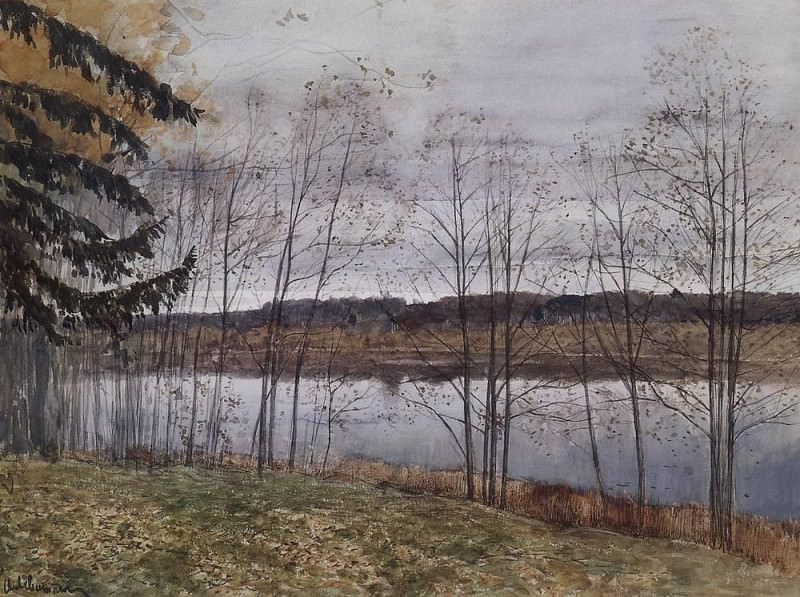Fall: 1. 1896 Isaac Ilyich Levitan (1860-1900)
Isaac Ilyich Levitan – Fall: 1. 1896
Edit attribution
Download full size: 1000×746 px (0,2 Mb)
Painter: Isaac Ilyich Levitan
Autumn is one of the most enigmatic and colorful seasons of the year, which at all times has been sung by poets and inspired artists in their most beautiful paintings. Levitan was no exception. He wrote the picture "Autumn. October," one of the most famous Russian impressionist painters, Levitan, in 1887. His landscapes, dedicated to autumn, differ from others in their vitality and sensuality. They were originally created for people, not for museums or private collections.
Description of Isaac Levitan’s Autumn (October)
Autumn is one of the most enigmatic and colorful seasons of the year, which at all times has been sung by poets and inspired artists in their most beautiful paintings. Levitan was no exception.
He wrote the picture "Autumn. October," one of the most famous Russian impressionist painters, Levitan, in 1887. His landscapes, dedicated to autumn, differ from others in their vitality and sensuality. They were originally created for people, not for museums or private collections. Levitan was able to convey to the maximum the positive side of the autumnal season: the summer heat is replaced by a cool autumn, which will give the earth the coveted rains and motley decoration of trees.
Despite this, in the color scheme that the artist used, you can see a deep sadness, and even depression. All this is not by chance. The fact is that it was in 1897, the artist became seriously ill. It was creativity was his medicine, so all the work of Levitan of the period, despite the sensuality, permeated with a few sad colors and details. In addition, if you look closely at the painting "Autumn. October," you can notice a certain inner opposition, a real struggle of the artist with the disease: in the gray, "dead" branches, growing young green twigs, which shows hope and faith in a brighter future. The same meaning is invested in the bright stripe above the horizon.
But the greatest inconsistency is expressed in the image of the river and sky. Firstly, they are executed in halftones, where grayness turns into milky-white shades. Secondly, the reflection of the sky in the river water can also be conditionally divided into two parts: light and dark. Not without reason this particular work of the artist is called the antipode. Despite this, it is in it you can see the artist’s true love for his homeland.
Кому понравилось
Пожалуйста, подождите
На эту операцию может потребоваться несколько секунд.
Информация появится в новом окне,
если открытие новых окон не запрещено в настройках вашего браузера.
You need to login
Для работы с коллекциями – пожалуйста, войдите в аккаунт (open in new window).




















You cannot comment Why?
Along the shoreline, slender trees stand stripped of most of their leaves, their bare branches reaching upwards like delicate filigree against the overcast sky. The ground is covered in fallen foliage, rendered in shades of brown and ochre, suggesting a period of decay and dormancy. These elements collectively evoke a sense of autumnal decline.
The artist’s technique emphasizes atmospheric perspective; distant features are softened and blurred, creating an impression of depth and vastness. The brushstrokes appear loose and fluid, contributing to the overall feeling of transience and impermanence. There is a deliberate lack of sharp detail, which encourages a contemplative rather than observational engagement with the scene.
Subtly, theres a melancholy quality present. It’s not overtly expressed but arises from the muted palette, the bare trees, and the stillness of the water. The absence of human presence reinforces this feeling of solitude and quiet introspection. One might interpret the work as an exploration of natures cyclical rhythms – the inevitable decline that precedes renewal – or as a visual meditation on the passage of time and the acceptance of change.